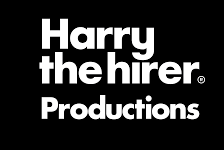News
10 Jun 2015
THE MILL REPORT: ONE PRICE TO FOOL THEM ALL (& IN THE DARKNESS BLIND THEM)

Subscribe to CX E-News
When you buy a litre of milk at the supermarket, do you only ever pay one price regardless of whether you choose low-fat, non-fat, full fat or soy? Of course you don’t. So why the hell does music sell for the exact same amount regardless of what it is or who made it? Beats me.
Imagine for a moment you’re a car manufacturer. Every year, along with your competitors, you develop new cars with up-to-date looks and the latest features. These new cars range in price, size and quality to suit the budgets of your customers, and each model costs a different amount to development and manufacture.
You know your customers well – sensitive to the fact that they’re not all the same and acutely aware that their bank balances range from somewhere between 10 and 10 million dollars. Consequently, the cars you produce come in a range of options that reflect the different spending capacities and needs of your customers. Collectively, your industry caters to almost everybody who travels on wheels and new cars range in value from between 10,000 and a couple of million bucks. Cut across to the music industry circa 2015 and everything changes. Bizarrely, here each company puts the <<same>> price tag on its products, irrespective of how much time and money was invested in the music’s manufacture. In Australian music shops, CDs and vinyl releases are invariably priced almost identically, and on the Australian Apple iTunes Store songs are quite literally the same, down to the cent: priced at either $1.69 or $2.19 (for ‘high-res’ downloads).
But why? Where else in a free market economy does this occur? Books all have different values, as do live concerts, houses, food… virtually everything. Why must CDs or individual songs on iTunes be any different?
It seems to me that charging the same amount for an individual song or album, regardless of who you are or how much your CD cost to manufacture, is like telling everyone in the car industry to value their cars identically:
“Mazda and Porsche, Ford and Holden, you will now each retail your products for $17,990, irrespective of how much they cost you to make.”
If you tried to foist this nonsense on the car industry they’d laugh in your face.
So I put it to anyone who’s thinking of releasing an album in coming months – particularly unsigned independent bands who intend selling their privately manufactured singles and albums at gigs – consider the concept of supply and demand.
In a global market, understanding where you lie on this curve is critically important to your bottom line. It’s how nearly all products are valued in most open markets. Don’t let the music industry’s quasi-socialist price fixing policy fool you. If you’re independent, pricing your products under the big boys is the one advantage you have over them.
One of the best ways to ensure that 600 copies of your next print run of 1000 CDs aren’t languishing under the bed three years from now, is by placing a monetary value on the product that’s sensitive to the demand for your music. That way, your CD will not only sell in greater numbers, you’ll almost certainly earn more and, in the process, gain in popularity. After that you’re up and running. Your live ticket sales will go up, your merchandise will start to sell and who knows from there… maybe one day soon you’ll be harassed for a selfie in the supermarket… won’t that be fun?
SET YOUR OWN PRICE
Nowadays, trying to sell CDs for $22 in any great quantity at gigs, when no-one knows who you are or what the product you’re selling sounds like, is unrealistic. You might as well try and sell them for $200. Either way, they’re not going to sell. A single or album’s intrinsic value should be driven by market forces, not artificially (and unrealistically) determined by record companies and independent bands. For whatever reason, everyone in the music industry I talk to seems to think their music release – which, in the end, is a product like any other – exists <<outside>> the supply & demand paradigm. Consequently, CDs are commonly priced far higher than what the market is willing to pay for them.
Elevated prices have suited big record companies down to the ground for years, and these days the biggest of them all, Apple, runs the show, maintaining the long-established status quo via its iTunes Store. It’s hard to see Apple changing its pricing policy any time soon, but outside these online sales structures, shouldn’t all bets be off? When bands fall into line with the pricing policies of these multi-nationals either out of misplaced pride or habit (or both), they fall right into their trap.
The vast majority of people buy whatever music is the most heavily advertised and in their face. They buy Coke for the same reason.
To most people, popularity equates to value for money, so when Mumford and Sons’ new single costs the same as yours, whose song do you think Joe Blow is going purchase? He’s probably never heard of you, and he already knows he likes the Mumford’s single because he’s heard it on the radio. The only hope you’ve got of selling your song to Joe ahead of The Mumfords is for your song to be cheaper. No crime in that is there?
THE SLIDE
As everyone knows, global sales figures in the music industry have continued inexorably downwards in recent years. Bloody hell, even the biggest acts in the world moan about their lost revenue, and to them I offer my sincerest condolences… my heart bleeds for them and their impoverished bank balances. But in the face of this endless downgrade in the value of music, solutions must be sought, though if you think for a moment the people who recently took to the stage at the launch of Tidal have any real cause for complaint you really are a sucker.
One way to arrest this slide is to abandon the long-held delusion that songs have a fixed and finite monetary value. For independent bands and individuals competing in the flooded marketplace, reducing your price is a fundamental economic advantage you have over companies that produce bigger, more costly albums. In any other industry, finding ways to make your product cheaper is synonymous with forging a commercial <<advantage>> over your competition, and this fundamental economic tenet should be embraced by independents wherever possible.
Unfortunately, when it comes to ‘art’, economic principles don’t often rate a mention. Particularly in independent circles, bands mistakenly consider their ‘art’ as having the same intrinsic value as the latest No.1 worldwide hit. But to argue this is to misunderstand the fundamental meaning of the word ‘value’ in this context. What we’re talking about here is money. It’s not about art, or pride, or self-esteem. It’s about manufacturing costs and sales.
So if you’re an up ‘n’ coming band, do yourself a favour. Dispense with the notion that selling your CD cheaply somehow devalues or belittles it. This simply plays into the hands of the big record companies who have perpetuated the myth for decades.
Find the place on the supply & demand curve that makes most financial sense to <<your>> album – not Sia’s – and sell your music accordingly. That way, your CD, vinyl or digital release will be given the best possible chance to sell. Once your popularity rises and you’re more in demand, perhaps then you can increase your price.
Subscribe
Published monthly since 1991, our famous AV industry magazine is free for download or pay for print. Subscribers also receive CX News, our free weekly email with the latest industry news and jobs.






